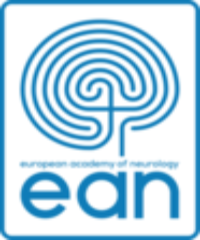
Contact:
Dr. Birgit Kofler
Phone: +43 676 6368930
E-Mail: kofler@bkkommunikation.com
- EAN congress
- migraine prevention
- congress
- neurology
- health
- medicine
| Pressbox |
Copenhagen (ptp025/31.05.2016/10:00) - Affecting six to eight percent of males and ten to twelve percent of females, migraine is among the most prevalent neurological conditions. According to the World Health Organization (WHO) it is one of the top five neurological disorders and costs sufferers years of ill health. "In 2015 around 109 healthy years of life were lost per 100,000 people due to migraine. This figure could be changed for the better in future thanks to improvements in therapy options. Advances in migraine prevention give hope that we will be able to improve quality of life for sufferers in future," explained Prof Till Sprenger from DKD HELIOS Clinic Wiesbaden, Germany, at the Second Congress of the European Academy of Neurology (EAN) in Copenhagen.
"There is still little research on how the currently available preventive treatments actually work. One potential mechanism could be the suppression of cortical spreading depression (CSD) - a wave that moves across the cerebral cortex with a reduction in neuronal excitability," Prof Sprenger explained. In animal models CSD has been suggested to underlie human migraine visual aura. Many preventive medicines are able to suppress this process. Generally speaking, an approximately 50 percent reduction in migraine days in at least half of patients is seen as a realistic therapeutic goal. Preventive therapies should also significantly reduce the intensity of pain and ensure that when attacks do occur they are more manageable.
"First-choice drugs are usually beta-blockers such as propranolol and metoprolol, the anticonvulsants valproate and topiramate, and the calcium channel blocker flunarizine. Several randomised, placebo-controlled studies show that these medications can reduce the frequency of migraine attacks, even though the majority of them were originally developed to treat other indications," Prof Sprenger observed.
There is also hope surrounding the prophylactic effect on migraine attacks from newer substances such as angiotensin-converting enzyme and angiotensin II receptor antagonists - especially candesartan. "Candesartan proved effective in two placebo controlled studies, in which 16 mg of candesartan was compared with a placebo and 160 mg of propranolol. Candesartan was demonstrated to have similar effectiveness to propranolol, and both were superior to placebo," the expert confirmed.
Hopes are currently being placed in monoclonal antibodies that target a neuropeptide called CGRP (Calcitonin Gene-related Peptide). CGRP plays a key role in the pathogenesis of primary headache. CGRP receptor antagonists have already been developed for the treatment of acute migraine and prevention. Whilst they are highly effective, they also have numerous disadvantages: in some cases treatment had to be abandoned due to acute side effects, including marked increases of liver enzymes, with the result that CGRP receptor antagonists have not been approved to date. According to studies published to date, the new monoclonal antibody against CGRP, or its receptor, appears to be better tolerated.
"Although safety and effectiveness in treating episodic and chronic migraine still have to be confirmed in phase three studies, I am confident that we will have access to new medicines that have been specifically developed for this indication to help us tackle the problem of primary headache," Prof Sprenger added.
The application of botulinum toxin type A (BTX-A; onabotulinumtoxinA) has also become an established therapy for the treatment of chronic migraines. Chronic migraines are associated with a frequent incidence of headache, leading to a high level of suffering in the individual affected. The positive effects of this therapy have been well proven in major studies, and the substance has also demonstrated its effectiveness in the treatment of chronic migraines in clinical practice.
Sources: World Health Organisation (2016): Neurological Disorders: Public Health Challenges, Chapter 2: Global burden of neurological disorders. Estimates and projections; EAN 2016 Teaching Course, Sprenger T, Advances and challenges in the preventive treatment of headache
(end)
|
 |










